The Malaysian Maritime Enforcement Agency (Agensi Penguatkuasaan Maritim Malaysia – APMM), with a fleet of two fixed-wing aircraft and six helicopters, has been involved in tackling wildfires not just in Malaysia but in several other Asian countries since 2012. The Agency's key assets for firefighting operations are a pair of Bombardier CL-415MP (Maritime Patrol) aircraft procured in 2008 and 2009. The amphibious aircraft, which have been used for maritime patrol, search and rescue, and anti-piracy operations, have also been heavily used for water-bombing alongside a fleet of three AgustaWestland AW139s and three Aérospatiale AS365N3 Dauphin II helicopters. In this article, we review the history and current fate of the helicopters and aircraft of the MMEA and their use in firefighting operations.
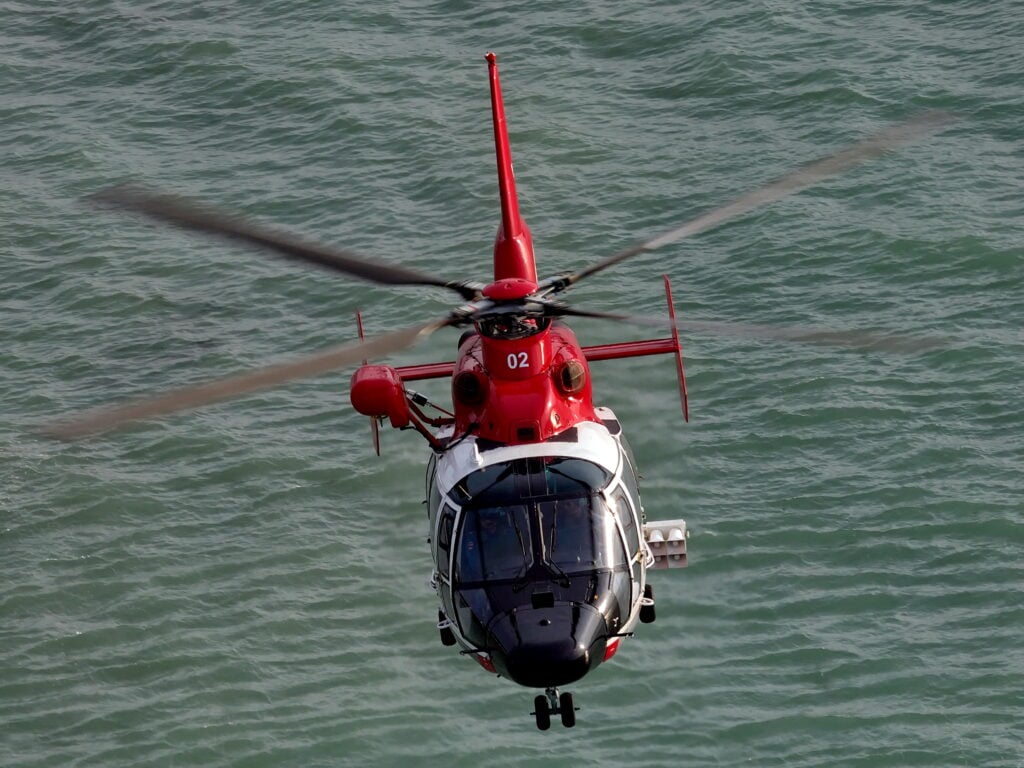
Helicopters of the MMEA
MMEA was established with the enactment of the Malaysian Maritime Enforcement Agency Act 2004 (Act 633) by the Malaysian Parliament in May 2004. They later achieved operational status on November 30, 2005, with the commencement of patrols by its vessels.
As a part of the plans for the formation of the MMEA, the Agency was projected to procure helicopters and aircraft for various missions such as Maritime Patrol, Search and Rescue, Medical Evacuation, and other missions as needed. For two years, it was the Royal Malaysian Air Force, Navy, and Police that occasionally provided their air assets, including helicopters, to support MMA's missions, including SAR.
An RM145 million MYR (Malaysian Ringgit) order was placed to procure three Dauphin 2s for the MMEA 2007. The helicopters were handed over to the MMEA on July 17, August 1, and November 26, 2007.
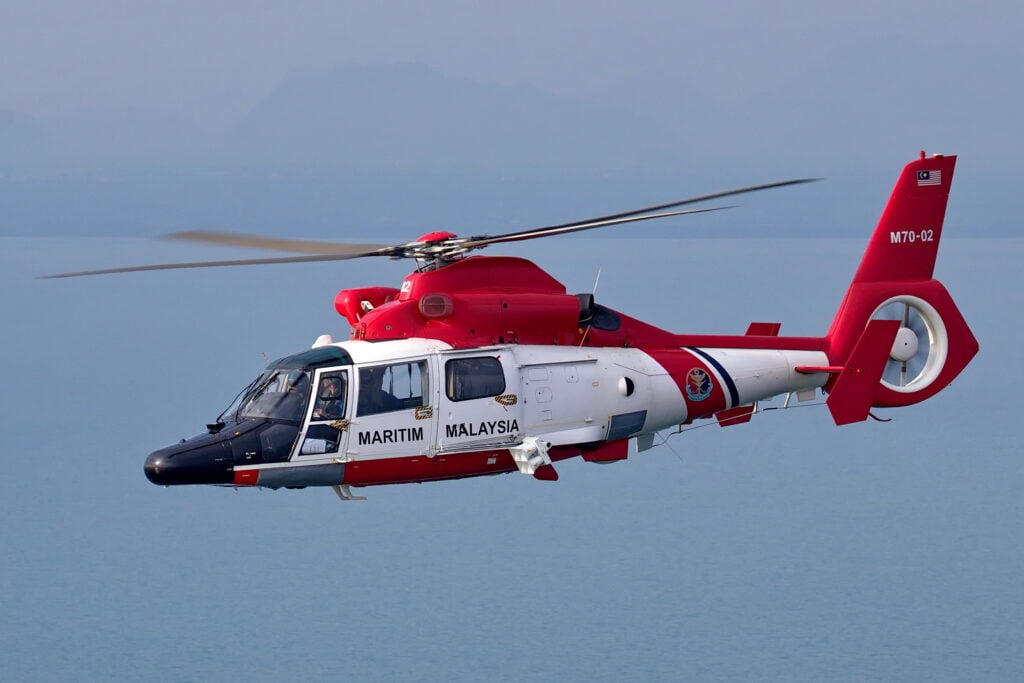
Based on the needs of MMEA for an all-weather and night-capable SAR helicopter, the Dauphin 2s were modified and equipped with weather radar and FLIR for night operations after their delivery. This forced MMEA to not operate them until the completion of their upgrade work in April 2008. A total of 12 helicopter pilots from RMAF were trained to become pilots of the three MMEA's Dauphins.
Following the short-term plans that had been implemented in the 9th Malaysia Plan (9MP) through Phase 1 (2006-2010) Strategic Plan for the establishment of MMEA, the Agency had priority to be equipped with maritime and air assets and build its human resource required to support its work and activities. Procurement of six helicopters and two airplanes was projected within the first Phase of the Strategic Plan.
Upon delivery of the Dauphin 2 helicopters, studies were started to procure three more helicopters and two fixed-wing airplanes with SAR and firefighting capability for the MMEA. Subsequently, a pair of Bombardier CL-415MP airplanes and three AW139 helicopters were ordered and received in September 2008 and December 2010, respectively.
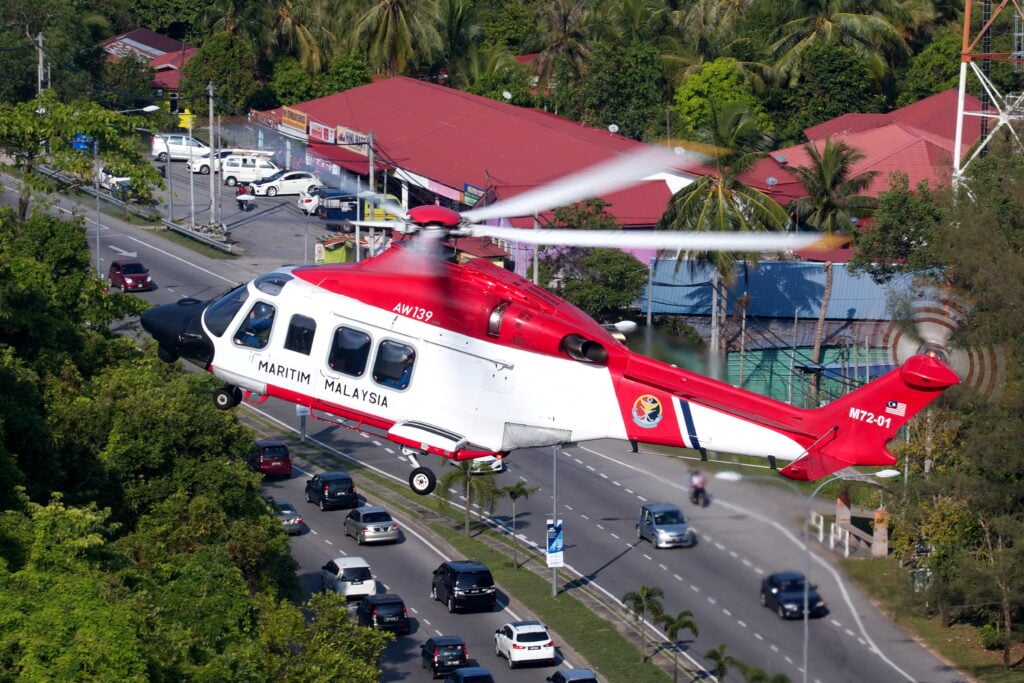
Finally, on October 30, 2008, the MMEA signed a contract for three AW139 medium twin-engine helicopters plus options for several additional aircraft to use for SAR, coastal patrol, and law enforcement duties around Malaysia's extensive coastline. With a maximum cruise speed of 165 knots (306 km/h), a maximum range of 573 nm (1061 km), and over 5 hours of endurance, the AW139 helicopter was the best option for the MMEA to be used in the harshest weather and environmental conditions of Malaysia.
Two years later, AgustaWestland, a Finmeccanica company, completed construction of the three ordered AW-139s of the MMEA in October 2010. All helicopters were transferred to Malaysia and were officially handed over to the MMEA during a ceremony at AgustaWestland Malaysia's facility near Kuala Lumpur on December 9, 2010. The MMEA's AW139 fleet was fitted with the latest mission equipment, including a FLIR, NVG-compatible cockpit, and a 4-axis Automatic Flight Control System with SAR modes.
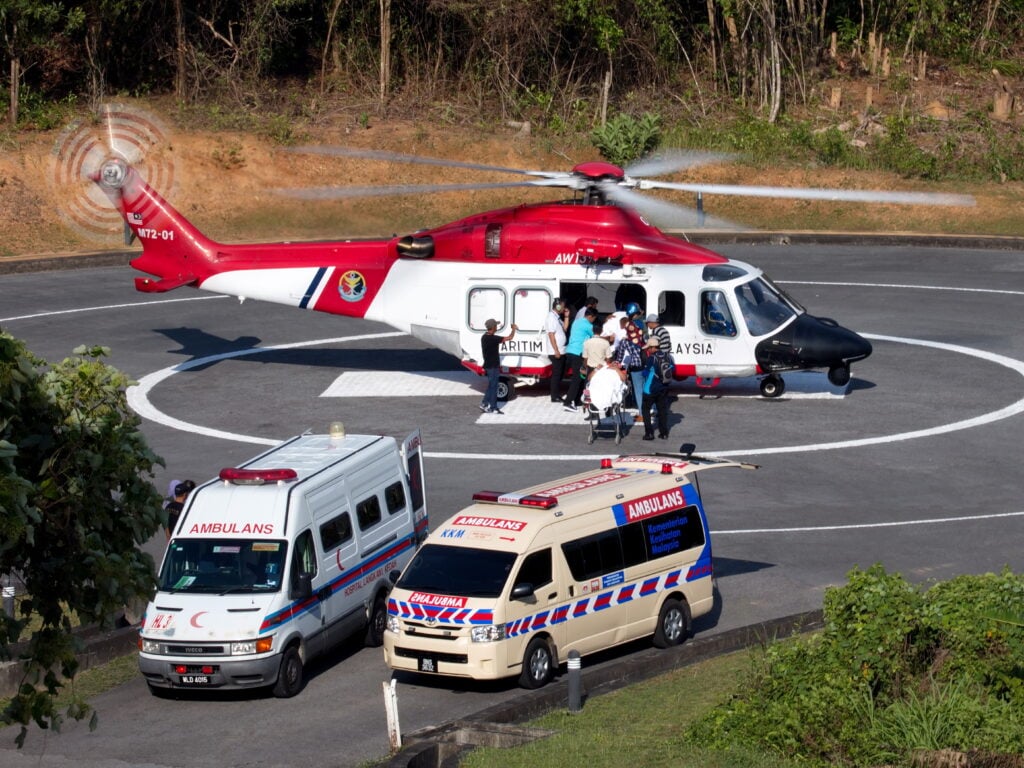
The Canadair CL-415MPs
In 2008, the Malaysian government ordered two Bombardier CL-215-6B11 (Series CL-415) equipped with maritime patrol equipment for the MMEA. The aircraft with 415-2068 and 415-2071 construction numbers were manufactured for MMEA. They were equipped with Pratt & Whitney PW123AF turboprop engines. Delivered in December 2008 and November 2009 to meet the needs of MMEA for maritime patrol and SAR in all-weather conditions during the day and night, in addition to weather radar, they were equipped with Side Looking Airborne Radar (SLAR), Forward Looking InfraRed (FLIR), Direction finder, MSS 6000 maritime monitoring system and video cameras that also allowed the MMEA to use them for oil pollution detection and control missions and firefighting operations as well.
M71-01, delivered sooner, was extensively used for training the first three sets of CL-415 aircrews of the MMEA in its first year of service and accumulated 619.6 hours of flight. In that year, the aircraft had almost 1000 water landings, especially in salt water, which resulted in corrosion development in the aircraft's fuselage and engines. Based on the lessons learned from its operations in 2009, MMEA's Air Operations Division at Subang implemented an extensive and strict corrosion prevention program to prevent similar issues for the M71-01 and the M71-02, delivered almost a year after the first one.
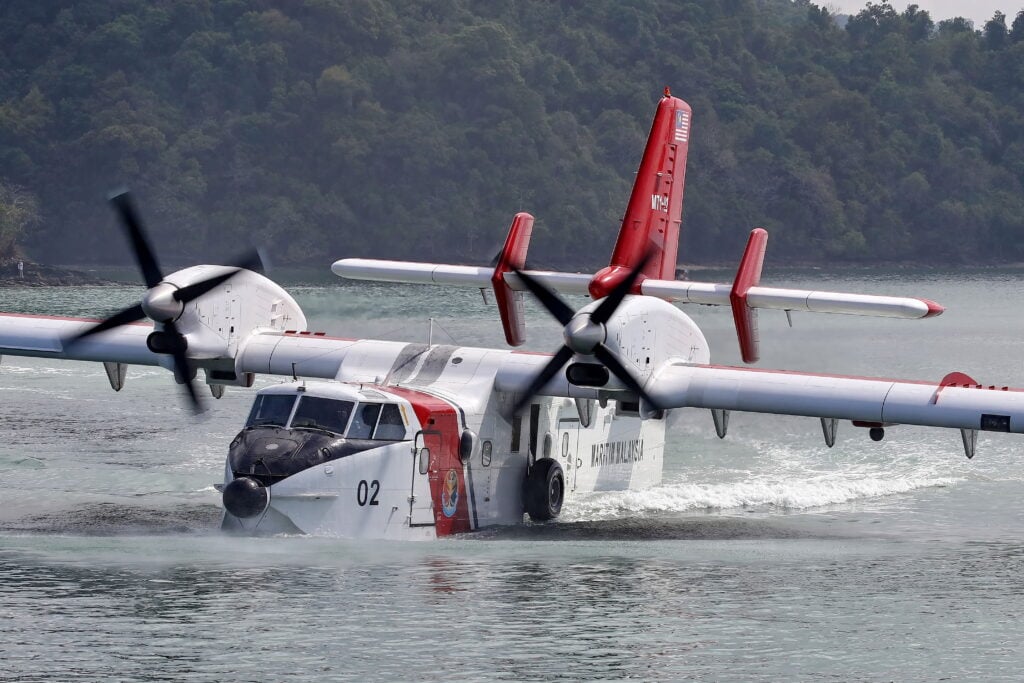
In addition to the corrosion issue, M71-01 suffered from at least one main landing gear incident after the tire assembly of the aircraft stuck in the landing gear bay due to a lack of grease on one of its main bearings. Also, both aircraft had repeated air condition system and auxiliary power unit system failures in the first years of their service. On December 5, 2010, when M71-01 and M71-02 had logged 619.6 and 91.3 hours of flight, respectively, their USD 2,679,496.30 maintenance contract was terminated and resulted in a temporary halt of their flying operations for a period of almost a year until a new maintenance contract was finalized.
As a temporary measure, the systems of both planes were always activated by making engine ground runs every week between January and December 4, 2011. In 2012, the MMEA resumed operating for various missions, including firefighting. Later that year, they performed a water bombing in Sabah province using water scooped from Cowie Bay after conducting aerial surveillance. In 2014, following the crash and loss of Flight MH370 of Malaysian Airlines, both of the CL-415MPs of the MMEA were widely used in search and rescue operations after the crash.

Notable Firefighting Operations of the MMEA
It is the primary task of the Fire and Rescue Department of Malaysia to battle wildfires in Malaysia. Its air unit has ten helicopters: an Agusta Westland AW109 light utility helicopter, two AW139 medium-sized utility helicopters, an AW18I medium-sized utility helicopter, and four Mil Mi-17-1V heavy utility helicopters. If any wildfire is beyond the capabilities of this air unit to be dealt with, the MMEA's CL-415MPs come to use for that purpose, supported by the AS365N3s and AW139s. The helicopters are used for surveillance and transportation of the firefighters and their firefighting equipment to tackle wildfires in remote and inhabited areas where their transportation by road is impossible. At the same time, the CL-415MPs perform water-bombing in addition to surveillance flights to detect the areas affected by wildfire.
As explained earlier in this article, for the first time in August 2012, the MMEA's CL-415MPs were used for firefighting operations. This was later increased to an average of three annual firefighting operations, including those overseas.
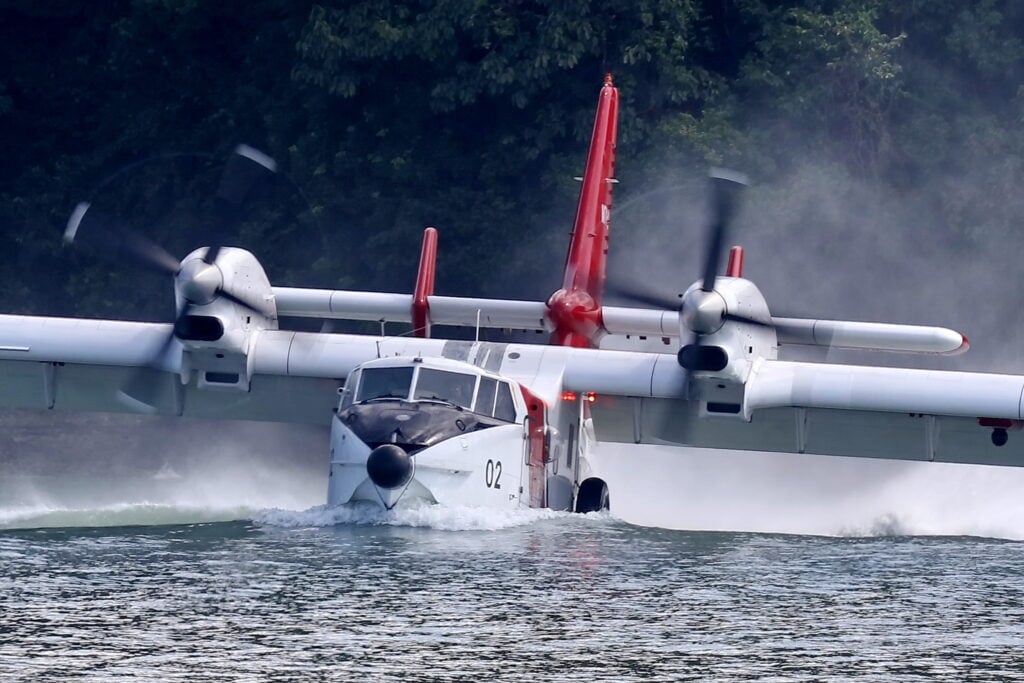
Following a widespread wildfire in the Sumatra forests of Indonesia between June 28, 2015, and October 29, 2015, MMEA assigned its forces and one of its aircraft to Indonesia to assist in tackling the fires. On Friday, October 9, 2015, a Bombardier CL-415MP with M71-02 s/n and an AS365N3 Dauphin 2 helicopter, both from the MMEA together with an RMAF's C-130 departed Subang International Airport, Kuala Lumpur, toward Sumatra to take part in the firefighting operations. The CL-415, capable of dropping 6,137 liters of water within 12 seconds, was used as a water bomber, while the AS365N3 was used for observation to locate the targets for the CL-415 pilots.
The M71-02, piloted by Lt. Cdr. Maritime Azizan Buang, carried out a total of ten water-bombing on the first day of operation at Sungai Lumpur, which is located in the southeast, 70 miles from Palembang on October 12. The next day on October 13, 13 more water bombings were carried out, and 78,000 liters of water were dropped within four hours and 40 minutes in an area of 20 square kilometers located 80 nautical miles southeast of Palembang both day and night. During all of the water bombing sorties, the MMEA's Dauphin 2 was airborne, and its aircrew coordinated the CL-415MP pilots to have accurate hits of their water on the blaze. Until October 21, 176 water bombings were performed by the M71-02, during which one million liters of water were dropped in 36 36-hour flights over 157 square kilometers.
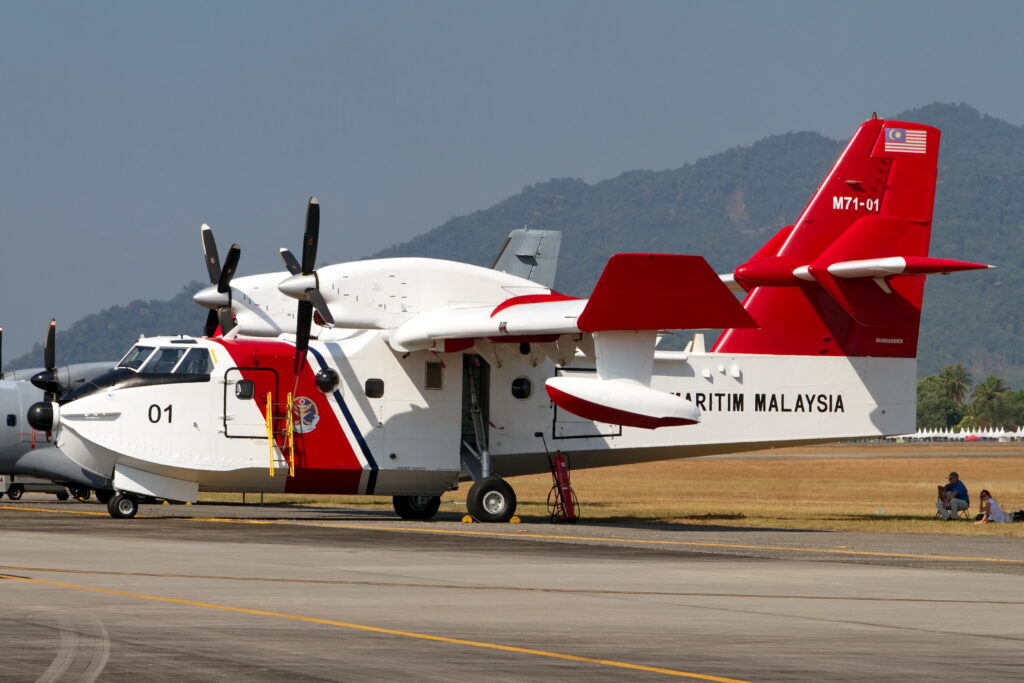
Following the massive wildfires in Malaysia in 2019, the two CL-415MPs again became involved in the operations to tackle them. They were deployed to Miri from August 15 to August 23, 2019, from where they performed several water bombing missions to tackle forest fires in Kuala Baram at the request of the Sarawak Government. A 1,248 hectares of peat swamp forest burned north of Sarawak, resulting in a strong haze. Thanks to the Baram River, located near the area affected by the fires, the CL-415MPs filled their tanks constantly. They increased the number of drops during each sortie. They only needed to fly briefly to scoop water in the South China Sea, which required longer flights.
Between 19 and 25 September 2019, one of the CL-415MPs was once again deployed to Sri Aman Sarawak for an operation to help put out the fire area, which was estimated at 202 hectares. The firefighting operation was performed at the local fire department's request, which could not control the forest fire in Sri Aman due to its location. The aircraft carried out the firefighting operations for six days, during which the aircraft performed water scooping at Sungai Batang Lupar, Kuching Sarawak.
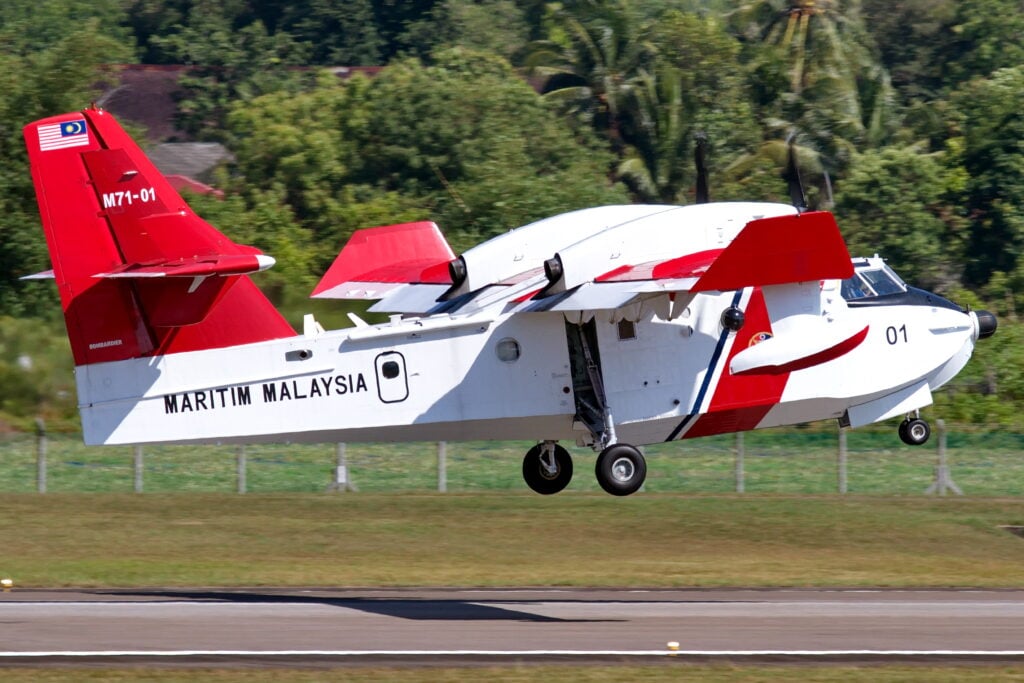
In March 2020, a CL-415MP of the MMEA was again used to put out forest fires, this time in the Kuala Langat Selatan Forest Reserve. The operation was carried out in collaboration with the Malaysian Fire and Rescue Department (JBPM) and other agencies, such as the Civil Defense Force and the Rapid Squad, by the Selangor state government from March 1 to 5, 2020. The aircraft performed two sorties (flights) per day, each lasting about four hours, while during the last day of operation, three sorties were performed. In the first three sorties, almost 30 water scooping were performed in Bukit Jugra River, located only 10 miles away from the fire zone, and a total of 162,000 liters of water was dropped in an area of 15,000 square feet under the control of Captain Suhaimi Abdul Kadir.
In August 2021, the MMEA again had one of its CL-415MPs involved in another firefighting mission at Kuala Baram near Brunei. Located more than 1,300km from Subang airport, the home base of MMA's aircraft and helicopters, the CL-415MP was again deployed to Miri International Airport. In a sortie performed on August 15, the plane dropped over 40,000 liters of water in a period of three hours at a 28-hectare peatland on fire.

The most recent forest fire in Malaysia that has had MMEA involved to extinguish it occurred in October 2023 at Sebana Cove-Punggai in Pengerang. The fire occurred near a petrochemical facility located near Singapore and over 300km from Kuala Lumpur, which made it necessary for the MMEA to deploy its aircraft to Johor Bahru International Airport near the fire zone. Instead of using helicopters for surveillance before the flight of the CL-415MP, the Fire and Rescue Department of Malaysia used a drone for this purpose. On October 11, the aircraft performed 18 water bombings over the area affected by fire and had it fully extinguished.
Future of the MMEA's Air Division
MMEA is in the process of having its fleet of six helicopters and two CL-415MPs retired and replaced with new helicopters. In June 2022, the Malaysian government issued a tender to procure four brand-new utility helicopters to replace the current fleet of three A365N2s for use mainly in SAR and Maritime Patrol duties. The tender mentioned that the MMEA needed four super-medium helicopters weighing up to eight tonnes with a maximum flight endurance of five hours. Leonardo with AgustaWestland AW189 and Airbus Helicopters with H175 were said to be the main competitors for replacing the current MMEA's helicopters.

The tender was planned to close in July 2022 but was extended several times. The tender's requirements were later changed, and it was mentioned that the helicopter needed to be equipped with a FLIR turret, a Night Vision Goggles compatible cockpit, and a winch for rescue operations with a total value of no more than RM450 million MYR. Subsequently, Sikorsky with S-92 and Airbus Helicopters with H-225 also became the other competitors. To allow procurement of the new helicopters, the Malaysian government decided to significantly increase the MMEA budget for fiscal year 2024 in October 2023. According to Malaysia's Defence budget bill for 2024, the MMEA's budget is RM621, significantly higher than RM240 MYR for 2023.
In addition to the plans to procure new helicopters, the Malaysian government has planned to procure two new maritime patrol aircraft to replace the two CL-415MPs. The future MPA of the MMEA will need more capability to land in the water and scoop, carry, and drop water. The MMEA has evaluated three options: Beechcraft 350 King Air, SAAB 340MSA (Maritime Surveillance Aircraft), and Bombardier Dash 8-Q400 in 2023. As of December 2023, when this article was written, the future replacement for CL-415MPs had yet to be selected or ordered.
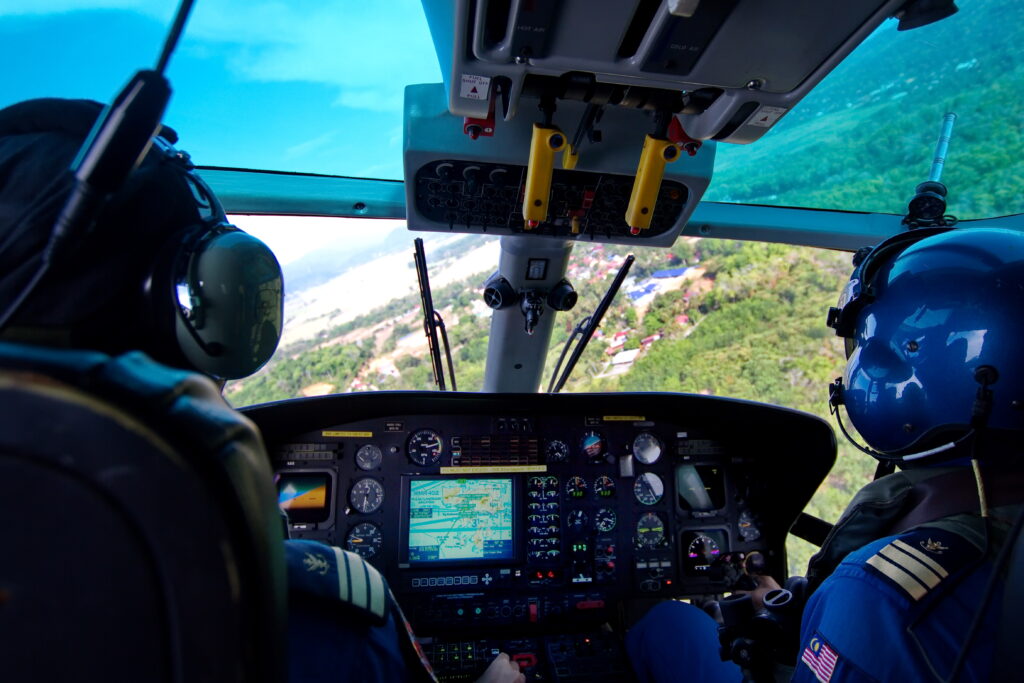
With the retirement of the two CL-415MPs in 2024 or 2025, the firefighting capabilities of the MMEA will be significantly reduced; however, with the procurement of AW189, H175, or H225 helicopters, the MMEA's Air Division will use them for firefighting operations using equipping them with Bambi buckets. Currently, the helicopters of Malaysia's Fire and Rescue Department, primarily the Mi-17s, use Bambi or other buckets for water drops during firefighting operations.






